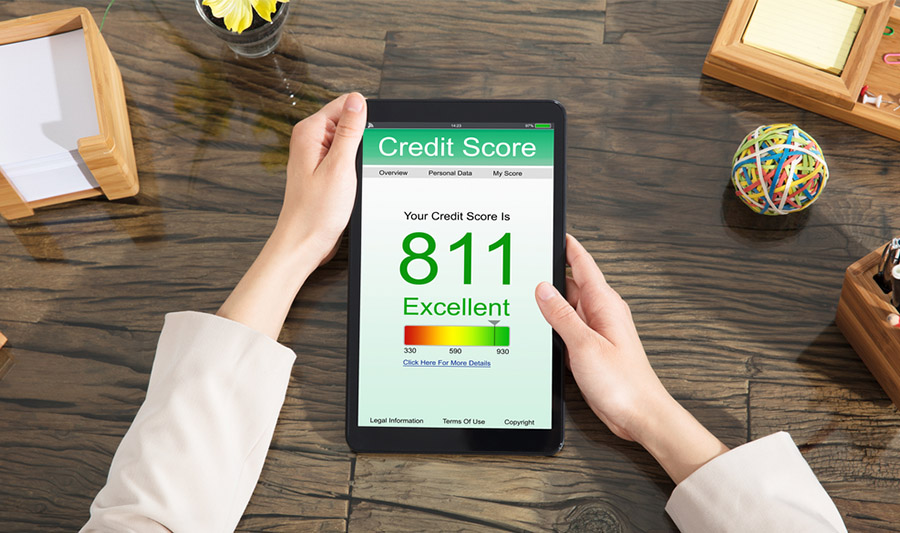Yet many families have no access to this financial product due to not having a good enough credit score in the first place. People constantly look for a way to end the paradox and enjoy the benefits credit cards offer. One possible solution is to sign up for a secured credit card.
Secured credit cards are available to people with a poor financial history or low credit score. They are supported by a deposit made to protect the financial institution when customers miss a payment. Like their traditional counterparts, secured credit cards help build credit history, improving credit score over time. In this article, we explain what are secured credit cards, the difference between them and other financial products, and how to improve credit score as fast as possible by using a secured credit card.
What are secured credit cards?
Standard credit cards operate with a line of credit given to customers by a financial institution. The interest rate and amount of available credit depends on the customer’s financial history and credit score. Secured credit cards do not operate on a line of credit given by a bank.
Instead, customers deposit an amount of money which will be equal to the credit limit. In general, the minimum deposit needed to get a secured credit card is $200, though some banks accept lower deposits. Capital One, for example, gives customers a $200 credit line with a $50 deposit if their financial history is good enough.
The deposit is not consumed when the card is used to purchase goods or services as long as the customer pays their bills. Instead, its purpose is to protect the financial institution if the customer doesn’t pay their bills.
If a delinquency happens, the bank takes money from the deposit to cover payments. This method gives customers with bad financial history access to a line of credit.
If customers pay their bills on time, the deposit remains untouched. Once their credit score is good enough to apply for a standard credit card, customers can close the secured credit card and get back their deposit. Some of the largest banks offer customers a way to upgrade their secured credit cards into a standard one when their financial history has improved.
The difference between secured and unsecured credit cards
As we mentioned above, secured credit cards rely on a deposit-backed line of credit to replace the lack of financial history or underwhelming credit score. Instead, banks only issue unsecured credit cards to customers with at least an average credit score to protect themselves from excessive risk. Families with high credit score usually have access to low-interest rate unsecured credit cards.
Some banks give unsecured credit cards to customers with low or no credit history. However, most come with extremely high fees that can ultimately strangle a customer’s ability to pay and improve their financial record. In that case, obtaining a secured credit card would be a much better option, even if it means working with a lower line of credit.
How secured credit cards work?
Aside from the initial deposit, secured credit cards are similar to unsecured ones when it comes to purchasing goods and services. Payment platforms generally do not recognize if the credit card is secured or unsecured. In general, banks the line of credit supporting credit cards on their internal platform, which means customers can use secured cards wherever credit is accepted.
This means that credit cards are an efficient way of improving credit scores. Customers can use a secured credit card to handle bill payments and other financial responsibilities. As long as they pay the balance on time, their credit score is guaranteed to rise. Eventually, they will gain access to an unsecured credit card, which increases available credit.
Like unsecured credit cards, secured ones carry interest if the customer carries a balance. The interest rate varies according to the issuing bank. For example, the Digital Federal Credit Union Secured Credit Card has a variable annual percentage rate (APR) of 13.25 percent, while the one offered by OpenSky has an APR of 19.15 percent.
Secured credit cards often come with an annual service fee which can be as much as $50. However, some credit card issuers like Discover It and Capital One charge customers no annual fees.
The difference between secured credit cards and prepaid debit
Some customers might think that secured credit cards are the same as a prepaid debit card. However, these financial products have significant differences. Customers who use prepaid debit cards have to put money into them before they can purchase goods and services. Additionally, the payments are made using the money placed into the prepaid card.
In contrast, customers who use secured credit cards are given access to a line of credit backed by a deposit. They can purchase goods and services with money borrowed from the financial institution just like a standard credit card. The deposit protects the bank if the customer is unable to pay.
However, the most important difference is that prepaid debit card transactions are not considered use of credit. As a result, they aren’t reported to credit bureaus and do not help improve credit scores. If the main goal of a customer is to improve their credit score, a secured credit card is a much better alternative than prepaid debit.
Making the most out of a secured credit card
Secured credit cards are one of the best tools to rebuild credit. However, to make the most out of a secured credit card, customers should keep a few things in mind. First, customers shouldn’t use their secured credit card excessively. Once or twice a month is enough to create a credit history.
Financial advisors recommend not spending more than half the credit line. They also recommend customers pay their balance every month before the due date. Interest rates on most secured credit cards are relatively high. Paying the balance before it gets processed into monthly payments helps improve credit scores significantly.
In general, customers need around twelve months to improve their credit score and become eligible for an unsecured credit card. Some financial institutions allow customers to upgrade their line of credit into unsecured status, instead of opening a new one. This method is much better for credit scores, as it avoids reporting the closure and opening of a credit account.
Having a good credit score can help families improve their financial environment. Refinancing a mortgage or loan to obtain lower interest rates can be done with a good credit score. Many individuals struggle to find the most efficient way to improve their credit score as quickly as possible.
Secured credit cards are among the best ways to do so. However, customers should follow financially responsible practices or risk lowering their score further.




